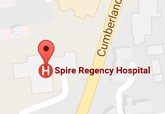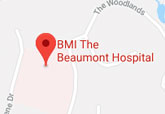Lumbar Laminectomy
Lumbar laminectomy, also known as decompression laminectomy, is a spinal surgery done to relieve excess pressure on the spinal nerve(s) in the lumbar (lower back) region.
The term laminectomy originated from the Latin word ‘lamina’ refers to a thin plate and the word ‘ectomy’ means removal. The purpose of laminectomy is removal of the lamina or roof of the vertebra so as to provide enough space for the nerves to exit the spinal canal (decompression).
Indications
Spinal stenosis is one of the major indications for lumbar laminectomy. It is a condition of narrowing of spinal canal due to arthritic changes of facet joints and intervertebral discs. This causes enlargement of the joint that exerts pressure on the spinal nerves.
Symptoms of nerve impingement are back pain or radiating pain into the hips, buttocks or legs, numbness or tingling sensation and muscle weakness in the back and lower extremities.
Procedure
Lumbar laminectomy is usually performed under general anaesthesia. In this technique, the patient lies face down on the operating table. A small incision is made along the midline of the back. To have a clear view of the spine, the surgeon slowly retracts the soft tissues and muscles. A part of or the entire lamina is removed to eliminate the pressure on the nerve roots. In addition, other sources of compression such as bone spur or damaged disc is removed to relieve the symptoms. At the end of the procedure, the surgeon realigns the soft tissues and the incision is closed.
What is the recovery period of lumbar laminectomy?
Following a laminectomy, you may observe an immediate improvement of some or all symptoms or sometimes a gradual improvement of the symptoms ..
The duration of hospitalization depends on the treatment rendered. At the end of the first day of the surgery you are allowed to move and walk around the hospital. Returning back to your daily life or to work depends on how well you are healing and the type of work or activity level.
Strictly follow the post-operative instructions suggested by your spine surgeon to promote healing and reduce the risk of post-operative complications.
Complications of Lumbar Laminectomy
The complications of the lumbar laminectomy include infection, nerve damage, blood clots, blood loss, bowel and bladder problems and any problem associated with anaesthesia.
Talk to your surgeon if you have queries regarding lumbar laminectomy.




